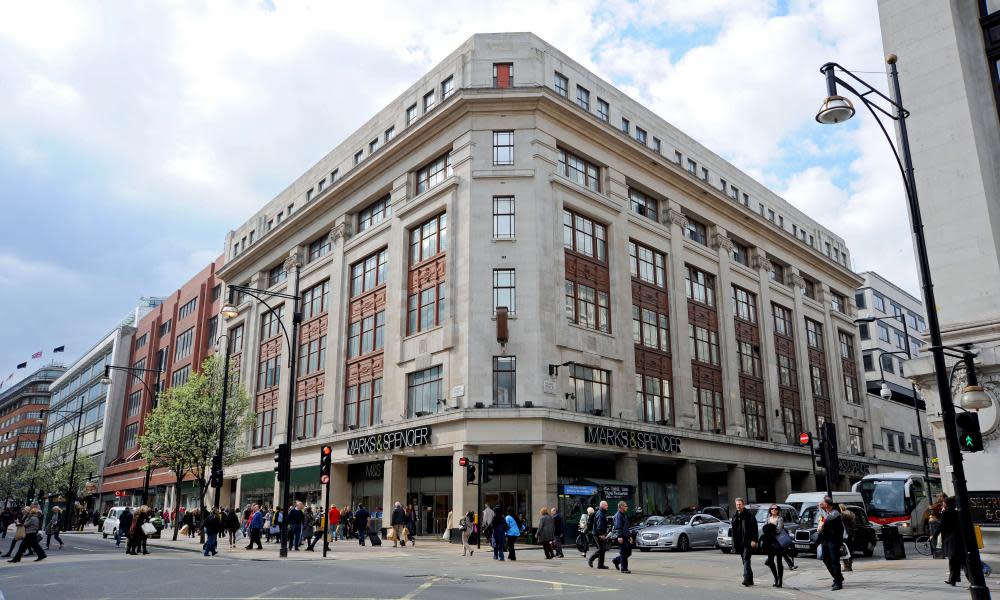M&S stands by plan to raze Oxford Street store as it rejects complaints

Marks & Spencer has pledged that 95% of the materials in its existing Marble Arch building in Oxford Street in central London will be recovered, recycled or reused as it fights back against heavy opposition to its plan to flatten the shop.
Related: M&S Oxford Street store plan opposed by author Bill Bryson and architects
In the run-up an inquiry into the scheme, scheduled to begin on 25 October, the retailer said some materials would be reused directly on-site within its new building as part of its efforts to “promote circular economy principles”.
The former communities secretary Michael Gove announced an inquiry into the future of the store in June after vocal opposition emerged to M&S’s plan to raze the building, which had been approved by the local council and the Greater London Authority.
The retailer said Westminster council, which switched from Conservative to Labour control this year, continued to support the scheme.
However, the author Bill Bryson and architects including the Stirling prize winner Steve Tompkins, and Mark Hines, the project director for the remodelling of BBC Broadcasting House, are among those opposing the plan.
Bryson, best known for Notes from a Small Island and A Short History of Nearly Everything, has donated £500 to a fighting fund established by the campaign group Save Britain’s Heritage, which has so far collected more than £11,000 of its £20,000 target.
The M&S building has become a poster child for the debate over a shift to retrofitting and refurbishing structures rather than demolition and rebuilding, in an effort to cut the carbon footprint of redevelopment amid the climate crisis.
Opponents say the scheme, designed by the architecture firm Pilbrow & Partners, would release almost 40,000 tonnes of carbon into the atmosphere.
Sacha Berendji, the group operations director of M&S, said the new building would use less than a quarter of the energy of the current structure on completion.
He added that Orchard House, the 1929 Portland Stone building at the heart of the group’s plan, accounted for just 30% of the structures being knocked down.
“Even a heavy refurbishment of the buildings would involve more embodied carbon and leave structural flaws unremedied, limiting our options to improve energy usage,” he said.
“In addition to carbon reduction, our investment will deliver a better place to shop for our customers, a better place to work for our colleagues, and a better public realm for our local community.”

 Yahoo Movies
Yahoo Movies 
